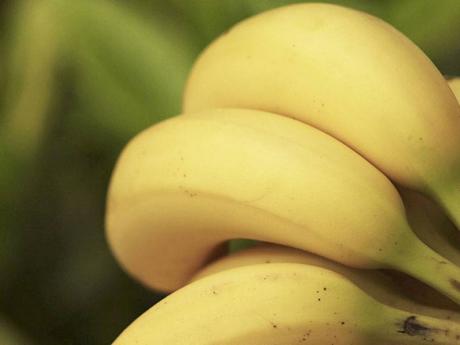Bananas to the rescue
Charlyn Fargo, Contributor
Gluten-free eating is tough. There are a lot of products that have gluten, derived from wheat, besides bread and rolls. Gluten is found in many processed products, as well as a thickener, among other things. That said, if you have to go gluten-free, there have never been more products on the market to help in your journey. The newest comes from green bananas.
A team of Brazilian researchers came up with a gluten-free product made from green banana flour. They used it in pasta, and a taste panel found it more acceptable than regular wholewheat flour. The research is published in the July edition of the Journal of the Academy of Nutrition and Dietetics.
"There was no significant difference between the modified pasta and standard samples in terms of appearance, aroma, flavour and overall quality," wrote lead researcher Renata Puppin Zandonadi from the University of Brazil in the Journal article.
The researchers compared standard wholewheat pasta made from wholewheat flour and whole eggs, with one made from green banana flour, egg whites, water and gums. As you might expect, the green banana pasta had reduced fat content and increased protein value. That's an important point because many gluten-free products compensate for removal of gluten with higher levels of fat.
While the number of participants is small - 50 taste-testers who did not have celiac disease and 25 with it - the results were conclusive among them. They all liked the banana flour pasta best for its aroma, flavour, texture and overall quality. The next step is a commercial market for the pasta.
- Information courtesy of the Journal of the Academy of Nutrition and Dietetics
Bottled tea vs home-made tea
Q: Is bottled ready-to-drink tea as high in antioxidants as the tea I brew at home?
A: No, bottled tea is much lower in the polyphenol compounds that give black and green tea their antioxidant power. Commercial teas do seem to vary somewhat, but even those reportedly highest in polyphenols, and the compound called EGCG in particular, don't contain anywhere near the amounts documented in standard brewed tea. The unsweetened versions are still excellent zero-calorie alternatives to sugar-laden soft drinks when you are not able to brew your own. However, brewing tea at home is both less expensive and higher in antioxidant polyphenols.
Although population studies show inconsistent evidence for tea-reducing cancer risk, laboratory research suggests polyphenol compounds may act through pathways other than as antioxidants to reduce development of cancer, though more research is needed.
Brew up a pitcher and refrigerate to have a cool zero-calorie drink handy on hot summer days. Here's how: for concentrate, bring one quart of cold water to a rolling boil. Remove from heat and add eight to 10 teabags for each quart of brewed iced tea. Steep three to five minutes. To serve, add to cold water and/or ice cubes. If it seems too hot even to boil water, you can brew tea overnight in the refrigerator by steeping a few tea bags in a pitcher of cold water.
- Information courtesy of the American Institute for Cancer Research
Charlyn Fargo is a registered dietitian at Creators Syndicate writers and cartoonists. Creators Syndicate website: www.creators.com.

